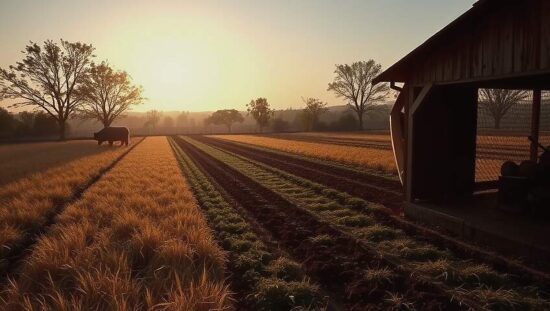Agricultural producer prices in Germany registered a 2.2 percent increase in September 2025 compared to September 2024, according to data released by the Federal Statistical Office (Destatis). This follows a similar rate of increase in August 2025 and a slight decrease in July 2025. However, a notable 1.5 percent drop was observed month-on-month in September.
The diverging trends in plant and animal product pricing continue to shape the agricultural landscape. While prices for agricultural produce have fallen drastically, plummeting by 10.5 percent year-on-year, prices for livestock and animal products have risen sharply, marking an increase of 9.9 percent. This polarity creates a complex economic situation for farmers and consumers alike.
The significant decline in plant-based product prices is largely attributed to a substantial drop in potato prices, which were down 44.0 percent compared to September 2024. This decline is indicative of broader issues within the potato market – potentially oversupply or shifting consumer demand, requiring further investigation. Vegetable prices also experienced a decrease of 4.8 percent, driven by lower prices for key items like cucumbers, iceberg lettuce and cabbage. However, certain vegetables, notably mushrooms, bucked this trend, witnessing a price increase of 8.8 percent.
The fruit sector also shows signs of adjustment, with a 0.6 percent decrease in producer prices, the first year-on-year decline since April 2023. This suggests a possible correction following a period of higher pricing, though particular fruits, such as table apples, have seen price increases of 5.7 percent, potentially reflecting regional supply differences or specific varietal demand.
Grain prices recorded a substantial drop of 11.5 percent year-on-year, underlining a softening of demand in the grain market. Overall, commercial crops were 12.3 percent cheaper, with rapeseed being a notable exception, experiencing a relatively minor price increase of 1.5 percent. The continued decrease in feed crop prices, down 9.3 percent, points towards pressures on livestock feed costs. Wine, however, defied the downward trend with a 2.1 percent price increase.
Livestock prices, particularly for cattle (up 42.1 percent), continue to be a significant driver of the overall increase. While slaughter pigs saw a decrease of 4.6 percent, poultry prices surged, with “other” poultry (ducks and turkeys) experiencing a substantial 16.3 percent rise and chicken prices up 7.6 percent. The sustained rise in milk prices (8.2 percent) and egg prices (9.7 percent) contribute to inflationary pressures within the agricultural sector.
The contrasting trends-the sharp decline in plant-based produce alongside escalating prices for livestock-raise political questions regarding agricultural subsidies, trade policies and the long-term sustainability of German agricultural practices. Further scrutiny is warranted to understand the underlying factors driving these divergent price movements and their potential ramifications for national food security and agricultural livelihoods.





